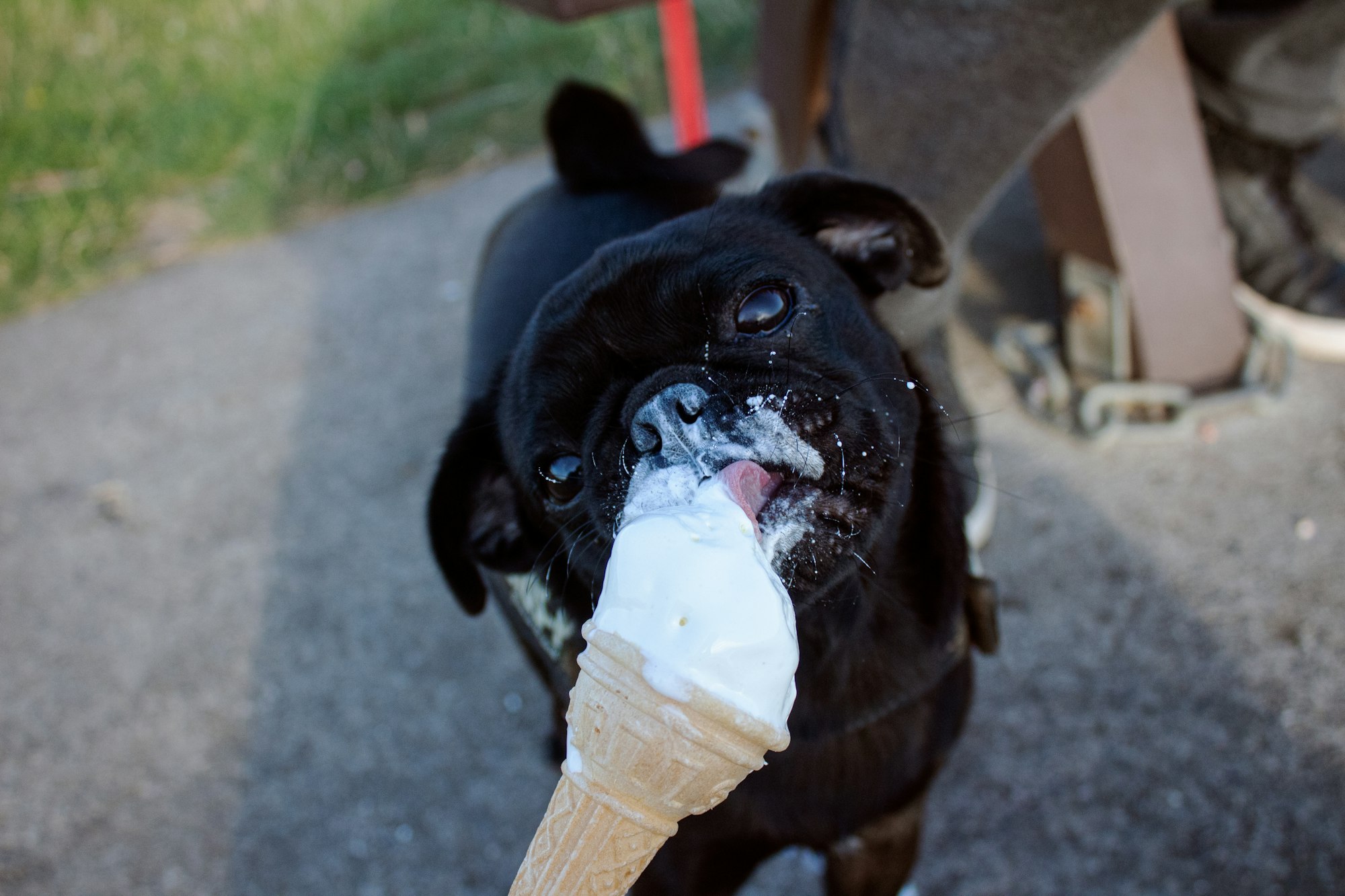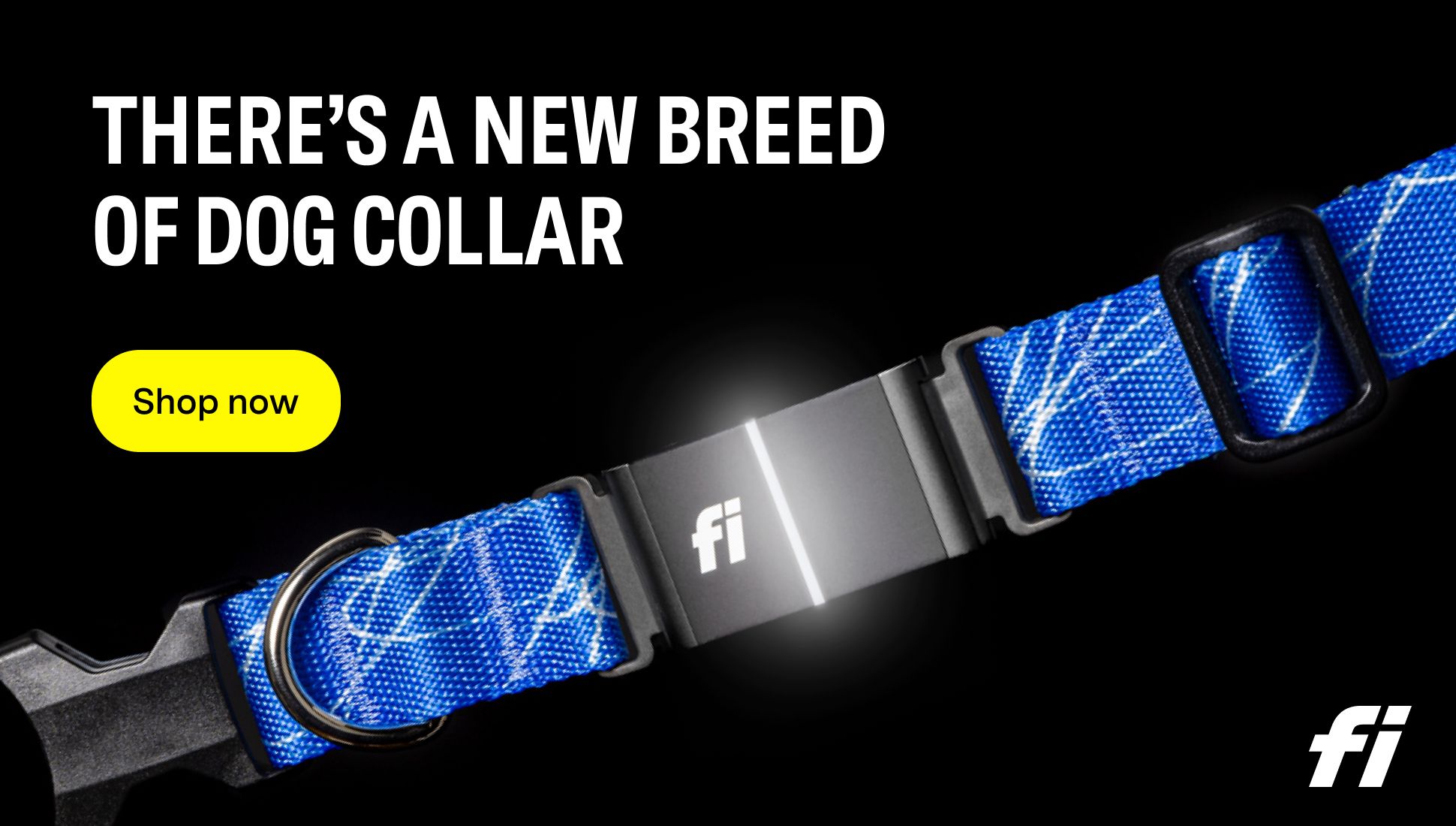On a hot summer day, do we treat ourselves to a cold beverage? We get the sudden rush of brain freeze. But can our furry friends, like dogs, also get brain freeze? Yes!
It's similar in dogs as it is with humans. In their mouths, they have nerves and blood vessels that are sensitive to the cold. When they eat something cold, like ice cream or frozen treats, the blood vessels constrict then dilate quickly. This sends pain signals to their brain, causing brain freeze.
Dog owners should be aware of this and take precautions. While it may be tempting to share our treats with our pets, it's best to avoid giving them extremely cold food or drinks. Cooling beds or pet-specific frozen treats are better options.
Not just dogs, but cats and some birds can also experience brain freeze. So, when you reach for a cold treat on a hot day, your pooch might appreciate something refreshingly cool too - without the brain freeze!
Interestingly, polar bears, who live in cold climates, are unaffected by brain freeze due to their special adaptation.

Protect Your Pup from Brain Freeze with the Fi Dog Collar
While brain freeze can be an uncomfortable experience for our furry friends, monitoring their behavior and keeping them safe is crucial. The Fi Dog Collar, with its advanced technology, helps you keep a watchful eye on your pet’s health and habits. By tracking your dog’s activity levels and behavior, you can better understand their health and quickly detect signs of distress, such as pawing at the mouth or head shaking due to brain freeze.
This smart collar’s real-time location tracking also provides peace of mind, especially when your pet is out enjoying their favorite treats or exploring the outdoors. Make sure your dog enjoys every treat safely and comfortably with the Fi Dog Collar.
What is brain freeze?
Brain freeze, also known as ice cream headache or sphenopalatine ganglioneuralgia, is a common and short-term pain. It happens when cold food or drinks touch the roof of the mouth. The pain is usually quick, from seconds to a minute.
It can be compared to a sharp, stabbing ache that goes from the top of the mouth up to the forehead. It is thought to be caused by the swift cooling and narrowing of blood vessels in that area. When something cold is consumed, the nerve endings in the roof of the mouth send signals to the brain, causing this painful experience.
Surprisingly, dogs can get brain freeze too! They have nerve endings in their mouths that react to extreme temperatures. If your pup eats an ice cream treat or takes a sip of icy water too quickly, they may experience a sudden headache-like discomfort.
To avoid brain freeze for both you and your pup, there are a few things you can do:
- Give them smaller portions at once, instead of allowing them to eat large amounts. This will regulate their intake and reduce the risk of brain freeze.
Also, allow frozen treats or cold water to warm up a bit before serving. This gives their mouths and nerves time to adjust without causing a shock.

Can dogs experience brain freeze?
As it turns out, dogs can indeed experience brain freeze, just like humans. When dogs consume cold treats rapidly, such as ice cream or frozen treats, the sudden drop in temperature can cause the blood vessels in their mouth and throat to constrict. This sensation triggers a headache-like pain, known as brain freeze, which can last a few seconds to a couple of minutes.
It's important to note that while dogs can experience brain freeze, their reactions may differ from humans. Dogs cannot verbalize their discomfort, so they may show signs of distress in other ways, such as pawing at their mouths or shaking their heads. It's essential for dog owners to be vigilant and monitor their pets' reactions when giving them cold treats.
Interestingly, some dogs seem more prone to brain freeze than others. Smaller dog breeds, such as Chihuahuas, may be more susceptible due to their smaller body size and potentially faster consumption of cold treats. However, individual sensitivity can vary, and not all dogs will experience brain freeze even if they consume frozen treats rapidly.
Remember, while it may seem amusing, brain freeze can be uncomfortable and even painful for dogs. It's crucial to be mindful of their well-being and avoid giving them treats that could potentially lead to this sensation.

Explanation of why dogs may experience brain freeze
Dogs can suffer brain freeze too! This is because they share similar anatomy with humans. Cold treats can cause blood vessels in the mouth and throat to constrict, leading to pain. This is known as sphenopalatine ganglioneuralgia and affects both humans and dogs.
When a dog eats something cold too quickly, their nerves become irritated. This causes a headache, which we call brain freeze. Dogs can't talk, but they might shake their head or paw at their face.
Brain freeze is actually a protective mechanism for dogs. They learn from this painful experience and are less likely to eat icy treats too quickly in the future. It's important for owners to be aware and stop their pet from eating anything too cold.
Signs and symptoms of brain freeze in dogs
- Observing Steady Pawing or Rubbing of the Head
- Noticing Increased Blinking or Squinting of the Eyes
- Witnessing Excessive Head Shaking or Tilting
- Noticing Sudden Cessation of Eating or Drinking
- Observing Restlessness or Behavioral Changes
- Identifying Temporary Loss of Appetite or Refusal of Treats
Exploration of Unique Details: In rare cases, dogs may exhibit a temporary inability to hear or may even lose their sense of balance due to a brain freeze. Such occurrences are sporadic but should be monitored closely.
Create a Call-to-action: Ensure the well-being of your furry companion by being attentive to the signs of brain freeze mentioned above. Prompt identification and appropriate action can help minimize any discomfort or potential complications for your dog. Don't miss out on providing them with the care they deserve!
Behavioral cues to watch for
Brain freeze in dogs can be tricky to spot, so be mindful of behavioural cues. Restlessness or agitation, pawing at the face or head, and excessive drooling are all signs to look out for. Your pup may also shun food and water after consuming something cold too quickly.
Act fast if any of these symptoms appear. Rub your dog's head, offer warm water, and if the issue persists or worsens, contact your vet.
Physical signs to look out for
Out of the blue, your pup may suddenly stop moving while chowing down something cold. This could be a sign of brain freeze, as the cold temperature affects the nerves in their mouth and throat. Your dog may tilt their head to soothe the pain, whine, or even paw their face. If you spot any of these symptoms, you can try to help them out.
To help with their discomfort, give them a warm blanket, massage their jaw/neck area, or distract them with activities. Additionally, limit their cold treats and opt for room temperature ones instead. If your pup's symptoms persist, it's essential to consult a vet for proper guidance.
Prevention of brain freeze in dogs
Dogs can be prevented from experiencing brain freeze by limiting their exposure to cold temperatures when consuming frozen treats. This can be achieved by allowing them to eat small portions at a time or by providing treats at room temperature. Additionally, avoiding giving dogs ice-cold water immediately after eating frozen treats can also help prevent brain freeze. It is important to prioritize the well-being of our furry friends and take precautions to keep them comfortable and safe.
Furthermore, it is worth mentioning that dogs have a shorter esophagus compared to humans, which makes them more susceptible to brain freeze. While brain freeze is not considered to be a serious condition in dogs, it can cause temporary discomfort and may lead to reluctance in consuming frozen treats in the future. Therefore, taking steps to prevent brain freeze can help ensure a positive experience for our canine companions.
A true fact related to this topic is that brain freeze in dogs is more commonly known as "ice cream headache" or "cold-stimulus headache." According to a study conducted by the Cornell University College of Veterinary Medicine, brain freeze in dogs is believed to be caused by the rapid constriction and then dilation of blood vessels in the brain, resulting in a headache-like sensation.
Stay away from ice cream trucks if your dog has a brain freeze sensitivity – it's like a canine version of The Shining, but with brain freezes instead of psychotic writers.
Alternative treats for dogs
For their well-being, it's essential to give dogs alternative treats. Here are 3 options:
- Natural Chew Sticks: Satisfies chewing needs & promotes dental health.
- Homemade Frozen Treats: Freeze yogurt or peanut butter in ice cube trays.
- Fruit & Veggie Bites: Give slices of apple or carrot.
Be careful when selecting treats. Some might have artificial ingredients or too much salt. Read the labels before buying.
Pro Tip: Don't give too many snacks. This can lead to weight gain & health issues.

Steps to take if a dog experiences brain freeze
When your dog has brain freeze, act fast! Here's what to do:
- Remain calm and observe your pup for signs like head shaking or whining.
- Remove the source of the chill - like an ice cream cone they grabbed!
- Rub their ears, offer a warm blanket, give lukewarm water, and stick to room temperature food.
- If the brain freeze keeps happening, chat with your vet.
- Remember prevention is the best medicine - keep them away from very cold food and watch their intake.
Help your pup out of their brain freeze - be their warmth during this chilly episode!
Conclusion
Dogs can, in fact, get brain freeze, just like humans. Eating cold treats can give our furry friends a temporary headache. It's important to remember to limit their intake, and keep them comfortable in hot summer months.
Although dogs may show signs of pain when they get brain freeze, it's usually nothing to worry about. The episodes usually go away in a few minutes. Owners should watch their dogs closely, and make sure they don't get dehydrated.
Not all dogs are equally susceptible to brain freeze. Some breeds may be more sensitive than others because of their tolerance for cold temps. Young dogs may also be more likely to get brain freeze since their bodies are still developing.
Frequently Asked Questions
1. What is brain freeze?
Brain freeze, also known as ice cream headache, is a short-term headache that occurs when you consume something cold too quickly. It is caused by the rapid cooling and constriction of blood vessels in the roof of the mouth.
2. Can dogs experience brain freeze?
Yes, dogs can experience brain freeze just like humans. However, they may not show the same symptoms as humans due to anatomical differences.
3. What causes brain freeze in dogs?
Brain freeze in dogs is caused by the rapid consumption of cold food or drink. When a dog eats something extremely cold, the blood vessels in its mouth can constrict, resulting in a headache-like sensation.
4. What are the symptoms of brain freeze in dogs?
The symptoms of brain freeze in dogs may include sudden head shaking or rubbing against objects, pacing, whining, or temporarily avoiding the cold food or drink.
5. How long does brain freeze last in dogs?
The duration of brain freeze in dogs can vary. It may last anywhere from a few seconds to a few minutes. Generally, the symptoms subside once the blood vessels in the mouth return to their normal state.
6. How can I prevent brain freeze in dogs?
To prevent brain freeze in dogs, avoid giving them extremely cold food or drink. Gradually introduce cold items to their diet, allowing their bodies to adjust. If your dog shows signs of discomfort after consuming something cold, try offering them room temperature water or treats instead.






